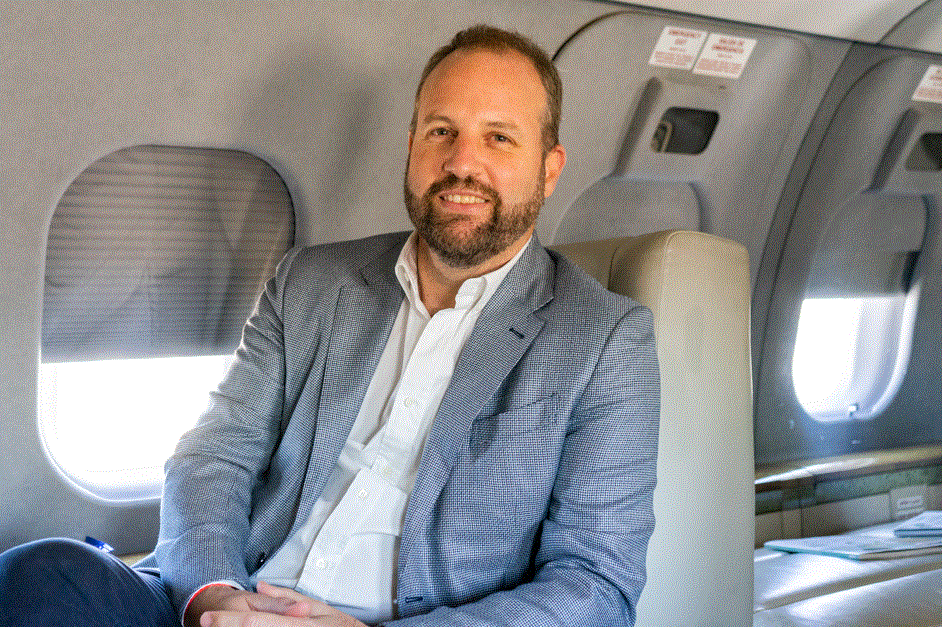
Welojets cofounder Alfredo Lisdero weighs in on the current and future situation of the air mobility ecosystem.
What we know today
While electrification of air mobility has huge potential, the aviation realm today is governed by jets and helicopters that require high maintenance costs and have a considerable carbon footprint. Consumers use ground transportation, car, or train, for travel that involves less than 500 kilometers (310 miles), resulting in a high maintenance regional transportation market with hefty emissions from cars.
For medium or long routes, private aviation is an option with increasing demand, which has a very extensive network of urban airports, yet largely underutilized. Finally, the regulation for helicopter flights in cities has many limitations that impact its potential extensive use in large urban areas.
The electrification revolution
Aviation has gone through one great power revolution already, the invention of the turbine. It allowed for a disruptive change in aircraft design, while piston engine aircraft were not retrofitted with turbines, thus resulting in planes radically different from the ones existing nowadays. The turbine reshaped the way we travel offering customers a great way to travel fast, cheap, safely, and efficiently.
Today, the next revolution is called electrification, which has many advantages, primarily very simple engines, few moving parts, small size, and low production and maintenance costs.
The previous explains why airplanes generally have a maximum of two engines. Designing an aircraft with more than two piston engines or more than three or four turbines is completely inefficient and results in high production and maintenance costs.
On the opposite, the cost of electric engines allows aircraft to be designed with many smaller engines (Distributed Propulsion) with aerodynamic advantages improving the total efficiency of the aircraft. All the previous substantially changes the rules of aircraft design and in the coming years we will see radical looks in the skies.
Furthermore, unlike combustion engines, electrification allows overpowering for brief moments to deal with peaks such as take-off or in the event of failure of one of the engines. This is much better suited to the power requirements of aircraft that typically require peak power for takeoff and then cruise using constant power, thus allowing for smaller, more efficient engines.
From failure to redundancy
Considering that aircraft generally have two engines, the regulator and the industry must have a reliability standard against failures that tends to be practically zero. According to the U.S. Federal Aviation Administration (FAA), today’s turbine failure rate is of one per 375,000 flight hours. That is an incredible engineering achievement! However, this entails high development costs and a very conservative preventive maintenance standard, which increases the overall costs.
By being able to design aircraft with multiple propellers and engines, the safety norm may change to a redundancy standard which reduces development and maintenance costs. It is no longer required to have engines or turbines that virtually never fail, just enough engines to avoid reaching a critical power loss like, for instance, a distributed propulsion aircraft with 8 or 12 engines would achieve.
The challenge: storage
Although there are no doubts about the available technology to achieve electrification, there are uncertainties on how to store the electrons necessary to run electric motors. The great challenge of aerial electrification is how to transport the number of electrons needed to power the engines, because, unlike electric cars, weight in aviation is critical, so this turns out to be the main bottleneck for its development.
There are currently at least three main technologies with their unique advantages and disadvantages that compete:
Full-electric
This requires the aircraft to have sufficiently charged batteries at the lowest possible weight. In essence, it has a limited load capacity. Today the technology does not have the necessary capacity for longer range flights and charging stations need to be developed.
Hybrid
The big advantage is that it uses generators that run the widely available A1 jet fuel at regional airports or sustainable aviation fuels (SAFS) to reduce the carbon footprint. The infrastructure and technology are already available to apply this type of solutions for the electrification of aeronautics, the great challenge being the integration of all systems.
Hydrogen
This option has great potential, although it poses generation, storage, and transportation challenges.
In conclusion: what does the future hold?
The future is bright for air mobility worldwide. Let’s analyze the challenges ahead and some alternatives for the upcoming years.
A new industry requires new regulations. Hence aeronautical, supra national, national, regional, and municipal regulators have a great challenge to create and harmonize the rules for the next revolution.
As per the aircraft itself, it is difficult to predict with the current state of the art what technological solutions will become mainstream in the future.
For Urban Air Mobility, full electric and hybrid could be established as a successful means of transportation while range would not be an issue at the current state of battery technology, as cases like Joby, Lilium and Archer are perusing.
For Regional Air Mobility (routes where consumers today use a car), it makes most sense to adopt hybrid solutions considering the well-developed regional airport infrastructure and Jet A1 availability. Some companies are doing exiting developments such as VerdeGo Aero & Airflow.
Long range regional could use a mix of hybrid and hydrogen aircraft. For the latter, hydrogen plants could be established at large regional airports to supply aircraft.
Finally, for ultra-long-range routes, the combustion turbine should remain queen. In the case of transatlantic transportation, turbine technology has a lead that will continue for many years. Although, who knows what the future holds?
At Welojets we believe that the electrification revolution is going to change the way we fly, and this is precisely why we invest in sustainable aviation projects. The sooner we make the change, the more people we will safely and efficiently connect and unite, improving the carbon footprint of an industry that strives for sustainability.


